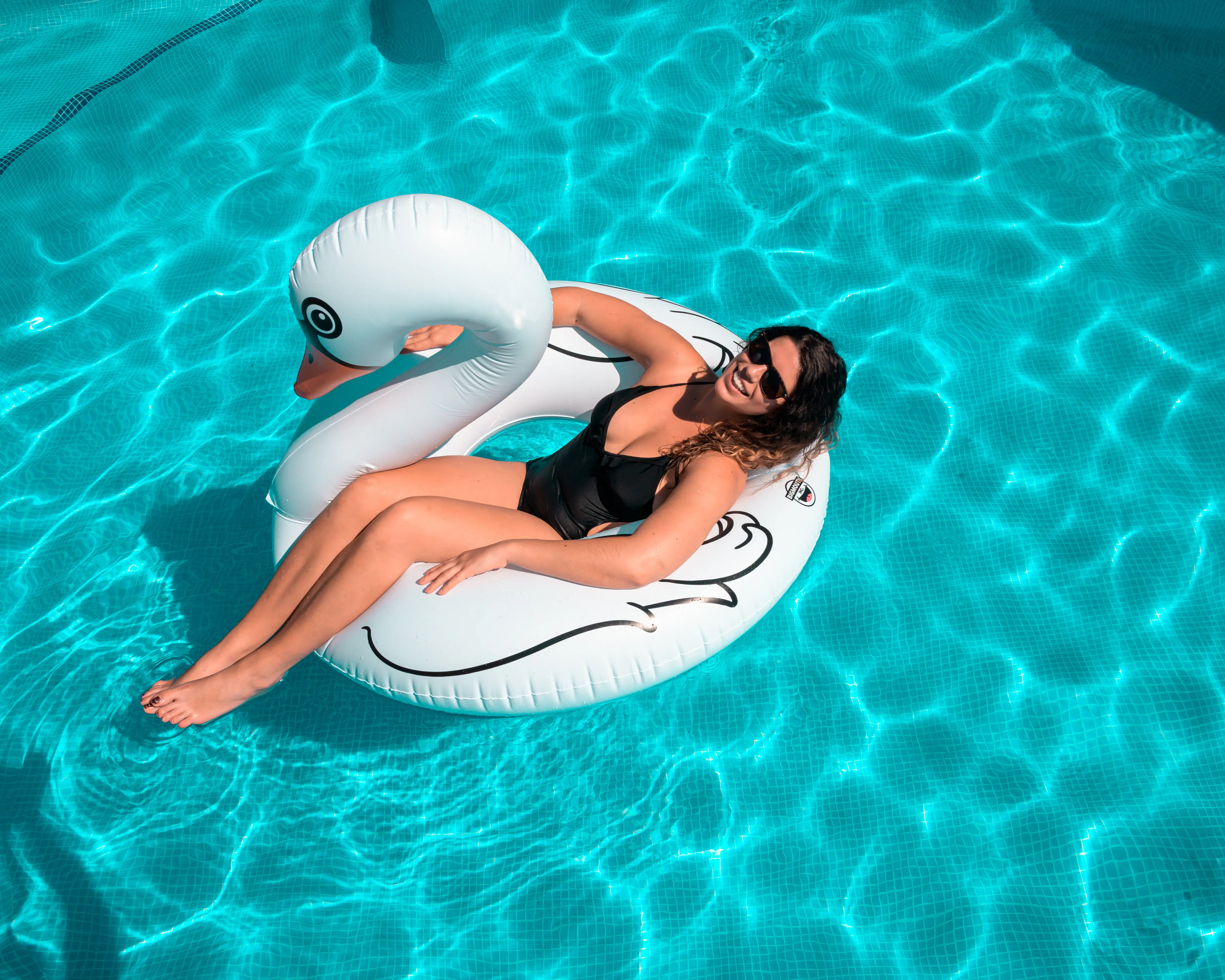The stabilizer is an essential parameter for maintaining good quality water. The stabilizer is helpful for a chlorine pool and a salt pool. The level of chlorine stabilizer must always be within a specific range. If the pool stabilizer is too low, it must be raised. When the pool stabilizer is too high, it must be reduced.
What is chlorine stabilizer in a pool?
The pool stabilizer is cyanuric acid (CYA). Its role is to protect the chlorine from UVs. The sun’s UV rays destroy the chlorine in the swimming pool, very quickly. The stabilizer will combine with free chlorine to protect it from UVs. It is like sunscreen for chlorine.
The problem with chlorine stabilizer is that it never goes away. It never evaporates and does not destroy itself. It sits in the water forever. It’s practical because once you have the right level, there is nothing more to do. However, the pool water may become saturated with chlorine stabilizer due to multifunction chlorine tablets.
What is the ideal level of pool stabilizer?
The pool stabilizer must be between 15 mg/L and 75 mg/L. The more the pool is exposed to UVs, the more interesting it is to have a high stabilizer.
When to put chlorine stabilizer in the pool: aim for a chlorine stabilizer level of 30mg/L if you use chlorine. Since the chlorine stabilizer is cumulative, there is no need to add more when this level is reached. The stabilizer must be adjusted mainly when the water has been entirely or partially drained. The water brought to fill the pool does not contain chlorine stabilizer and therefore helps to lower the rate.
Stabilizer for a salt pool
A salt pool needs less chlorine stabilizer than a chlorine pool. The salt-chlorine generator produces new chlorine when UVs destroy it. There is no risk for swimming.
However, the chlorinator will wear out more quickly this way. It will work a lot more. It will then be necessary to replace the electrolysis cell sooner. For this reason, it is recommended to have a little chlorine stabilizer in a salt pool. A lower quantity than a chlorine pool is sufficient, from 15mg/L.
Measure the chlorine stabilizer in the pool
The stabilizer is measured with a strip or a tablet. It is a chemical test that will color a sample of water.
We can determine the amount of stabilizer in the water depending on the color obtained. A photometer can be used to get a precise value. For a private pool, the color is enough.
Pool stabilizer too low
The risk of a too-low chlorine stabilizer in the pool
A lack of stabilizer will let the UVs from the sun destroy the chlorine. We will therefore have to add chlorine very often to replace it. If chlorine is not added, the water will not be disinfected. We will quickly find bacteria and algae, i.e., green and/or cloudy water.
There is no risk for humans. Drinking water does not contain a stabilizer.
Increase the stabilizer in the pool
If you lack a little stabilizer, a gradual action with stabilized chlorine tablets may be enough. Chlorine consumption may be higher at first. Over time, the chlorine stabilizer level will increase in the pool, and the chlorine consumption will stabilize. There is no need to buy a product dedicated to increasing chlorine stabilizers.
If you have a significant lack of chlorine stabilizer or do not use a stabilized chlorine tablet (for instance, in a salt pool), you must buy a dedicated product, such as HTH Stabilizer. There is chlorine stabilizer in liquid or granular form. The granular format can take several days to dissolve in the pool completely.
The stabilizer is pure. By adding 10 g/m³, the effect will be 10 g/m³, i.e. 10 mg/L.
pH impact. Adding chlorine stabilizer to the pool will lower the pH of the pool. After all, it is an acid, therefore having a low pH. After adding the stabilizer, wait a few hours and check the pH level to make sure it is still in the correct range. Below 7.1, the pH is too low and must be increased. With 10g/m³, the pH should drop by about 0.2 points. For each 5-point of chlorine stabilizer, the pH is therefore lowered by 0.1 points.
Stabilizer too high
The problem with a too-high chlorine stabilizer level: risk and consequence
Too much chlorine stabilizer in the pool creates a lot of problems.
The chlorine stabilizer must protect the chlorine from UVs. When there is too much chlorine stabilizer, it completely neutralizes the effect of chlorine. The swimming pool is then neither disinfected nor disinfectant. It can then spread bacteria or algae very quickly.
There is no particular risk in swimming in water with too much stabilizer for humans, as long as the other water parameters are good.
Decrease chlorine stabilizer too high in the pool
There is no solution. When the stabilizer is too high in the pool, part of the water must be drained and replaced with fresh water. New water does not contain chlorine stabilizer and will therefore reduce the water’s overall level of chlorine stabilizer.
There is too much chlorine stabilizer in the pool. The pool must be emptied, between 25% and 50% of the water, and refilled with new water. The chlorine stabilizer will thus be diluted and return to a more acceptable level. You should also stop adding chlorine stabilizer, including stabilized chlorine tablets.
